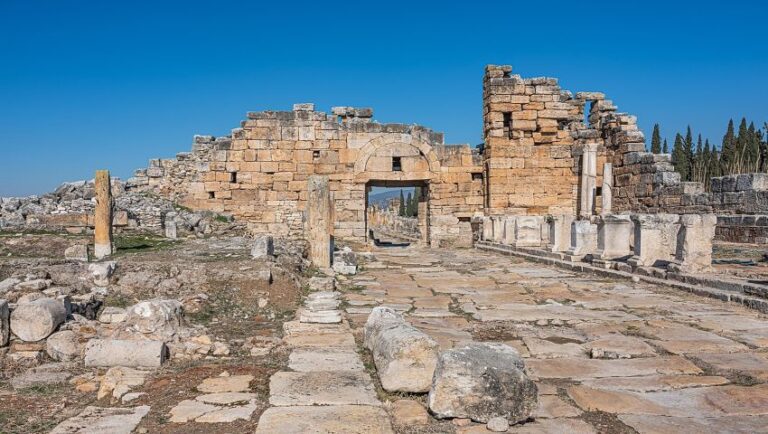Table of Contents
Turkish coffee has become an important part of Turkish culture and folklore for over 500 years.
Turkish coffee spread all over the world as a result of merchants’ travels from Istanbul to Europe. Therefore, it can be said that Istanbul was the starting point for the world to meet coffee.

How Did Coffee Become Common in the Ottoman Empire?
Coffee originated in the Ottoman Empire in the 1540s. History shows us that coffee was introduced by the Yemen Ottoman ruler Özdemir Pasha, who recognized the unique properties of coffee.
Özdemir Pasha presented a coffee to Suleiman the Magnificent. Sultan Süleyman also liked the cooking method and taste of this coffee made by the staff of Topkapı Palace. He continued to drink this coffee from now on.
Coffee became widespread in Ottoman society during the reign of Sultan Suleiman, which is a turning point in the history of Turkish coffee.
Workers in the Ottoman palace took coffee beans and boiled them in a special jug. This new drink impressed Suleiman the Magnificent and his wife Hürrem Sultan.
In 1544, two Syrian Arabs opened the first coffeehouse in Istanbul. At that time, Sheikh Bostanzadeh Mehmed Efendi issued a fatwa stating that coffee was not prohibited, but rather a useful and attractive drink.

Coffee spread from the Palace among the nobility in the country and became an indispensable part of Turkish culture. Sufis often drank coffee to stay up late to pray and strengthen their minds, so the habit of drinking coffee spread among the people.
Turkish coffee was prepared by a professional employee called “Coffee Master”. The master was present in most Ottoman palaces to prepare coffee for nobles and wealthy Ottoman citizens.
After a short time, the number of professional coffee masters in the country increased and many of the Masters opened their own coffee houses. Coffeehouses became an important part of Ottoman society and the history of Turkish coffee.
Apart from the capital Istanbul, the number of coffeehouses increased as they spread to Konya, Gaziantep, Mardin and Anatolia, and Sultan III. During the reign of Murad, their number reached 600.
Why Were Coffeehouses Banned in the Ottoman Empire?

“Conqueror of Baghdad” Sultan IV. Murad issued an edict to close the coffeehouses. The main reason for this decision of the Sultan was that the coffeehouses turned into places where there were many anti-state groupings that fueled disobedience and strife.
How Did Turkish Coffee Transported to Europe?
Venetian merchants who came to Istanbul in 1615 brought this beloved drink to their country, and Europeans were introduced to Turkish coffee for the first time in their history.
The first Italian coffeehouse opened in 1645, after which coffee spread throughout the European continent, arriving in Paris in 1643 and London in 1651.
The Golden Age of Coffee in the Ottoman Empire

Sultan Abdülaziz and Sultan II. Coffeehouses and coffee drinking culture spread significantly throughout the country. The Abdulhamid period is considered the golden age of coffee in the Ottoman Empire.
Coffee spread outside the Ottoman Empire, and in Europe the term “Turkish coffee” became known as that famous hot drink that the Turks were good at making.
Coffee in the Ottoman Society

Drinking coffee is one of the most important social traditions that became widespread in the Ottoman Empire and Turkish folklore. Women would often gather together to drink coffee with each other and eat sweets, especially Turkish delight.
Men also met in coffeehouses to discuss politics and play backgammon. In the early 16th century, these coffeehouses also hosted a new form of satire, political and social criticism called the Shadow Theater of Turkish Folklore, known as a puppet theater with the characters Karagöz and Hacivat. Ottoman coffeehouses became social environments that offered meeting and conversation.
Coffee Trade in the Ottoman Empire and Turkey
In the sixteenth century, Istanbul became a bustling center for the coffee trade, as well as the largest coffee market in the world at that time, as it hosted all kinds of coffee from different countries of the world. As a result, Europeans also came to Istanbul to bring coffee to their countries.
Coffee trade between the Ottoman Empire and Brazil first began in 1727, when the Empire imported coffee beans from Brazil in addition to coffee beans from Yemen.
Studies on coffee cultivation in Turkey have been carried out in many places, especially in Anatolia. Nestlé Nescafé started a coffee growing program in Turkey in the 1980s, and since 2004, with the program started in Mersin and Antalya, coffee has been grown on an area equivalent to only 16 hectares in Turkey.







